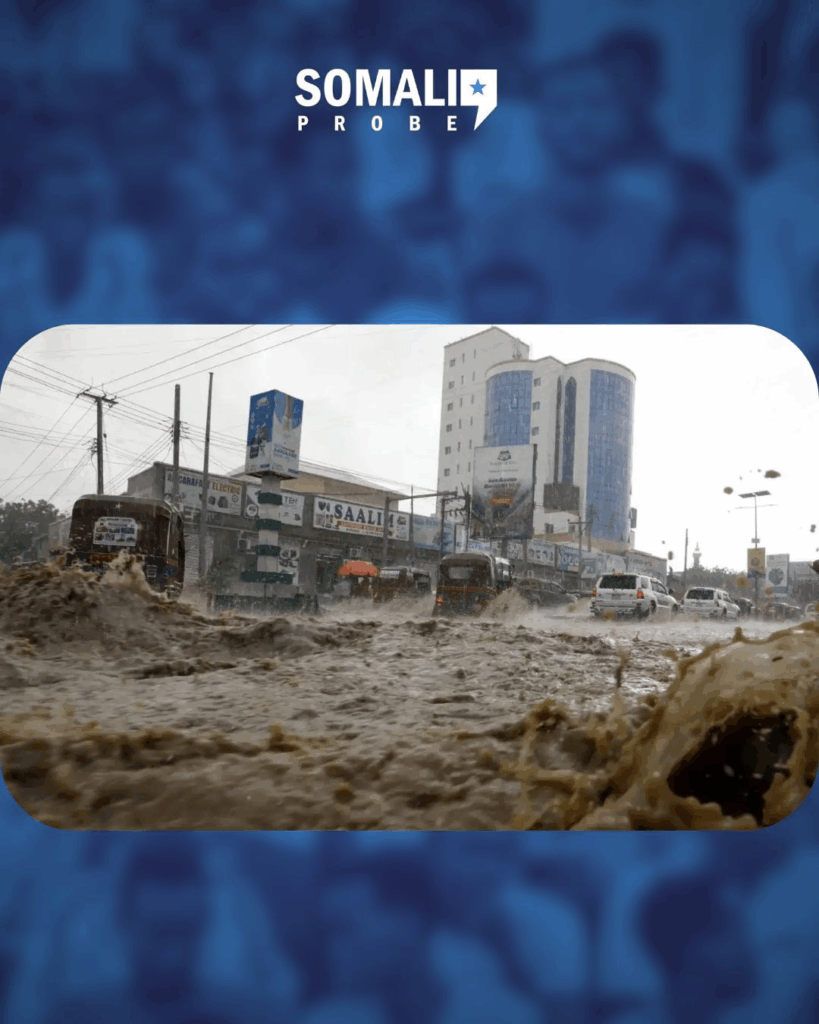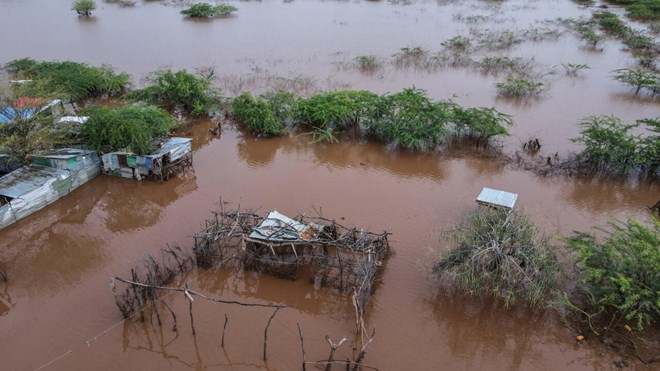Somalia climate crisis continues and torrential rains flood neighborhoods across the Somali capital.
Thousands like Mohamed Abdukadir Teesto are left vulnerable, with little hope and no support.
His home in Mogadishu’s Banadir region was recently overwhelmed by floodwaters, a growing threat in a country ranked among the world’s most climate-vulnerable by the United Nations.
Somalia Climate Crisis – The Story of Mohamed Abdukadir Teesto
“I cleaned our house with my bare hands.
No help came from the government or aid agencies,” said Teesto, 43.
“Many families remain displaced, unable to return. If it rains again, the same devastation will repeat.”
Somalia has experienced a series of extreme weather events in recent years.
Including the worst drought in four decades and catastrophic flooding.
The latest floods in Banadir have affected more than 24,000 people and claimed at least 17 lives.

Somalia Flood Crisis Deepens the Suffering of 45000 People
Aid Crisis in Somalia
Despite these emergencies, Somalia climate crisis is accompanied with a worsening aid crisis.
Humanitarian funding has drastically declined.
The UN reported that only 12% of its $1.4 billion target for Somalia has been met this year.
The situation worsened after the suspension of USAID programs under President Donald Trump’s administration.
1.8 Million Children Are Severely Malnourished
“This can get very, very bad, very quickly,” warned Sara Cuevas Gallardo, spokesperson for the World Food Programme (WFP), which delivers 90% of Somalia’s food aid.
She highlighted a critical shortfall in resources, saying:
“We don’t know if we have the capacity to respond.”
The humanitarian toll is severe.
According to CARE International, 1.8 million children under five are severely malnourished, with nearly half a million at risk of dying without urgent intervention.
Al-Shabaab are Displacing more Families
The International Crisis Group has repeatedly linked Somalia’s escalating climate shocks to rising insecurity.
Recent attacks by Al-Qaeda-affiliated group Al-Shabaab are displacing more families and straining already limited resources.
“If conflict is mixed with climate shocks, it results in greater food insecurity, more displacement, and an overwhelmed response system,” Cuevas Gallardo explained.
Somalia Climate Crisis 2025: Aid Systems Are Going to a Breaking Point
British NGO Save the Children also warned of impending facility closures.
Due to funding shortages, including all nutrition and health centers in Baidoa — a critical region in Somalia’s humanitarian response.
Dr. Mustafa Mohammed, working at one of these clinics, said, “There is nowhere else for these children to go.”
Somalia climate crisis is worsening, food insecurity and ongoing conflict are also getting worse.
Pushing aid systems to a breaking point.
Without immediate international support, humanitarian organizations warn of a potential return to famine-like conditions.


